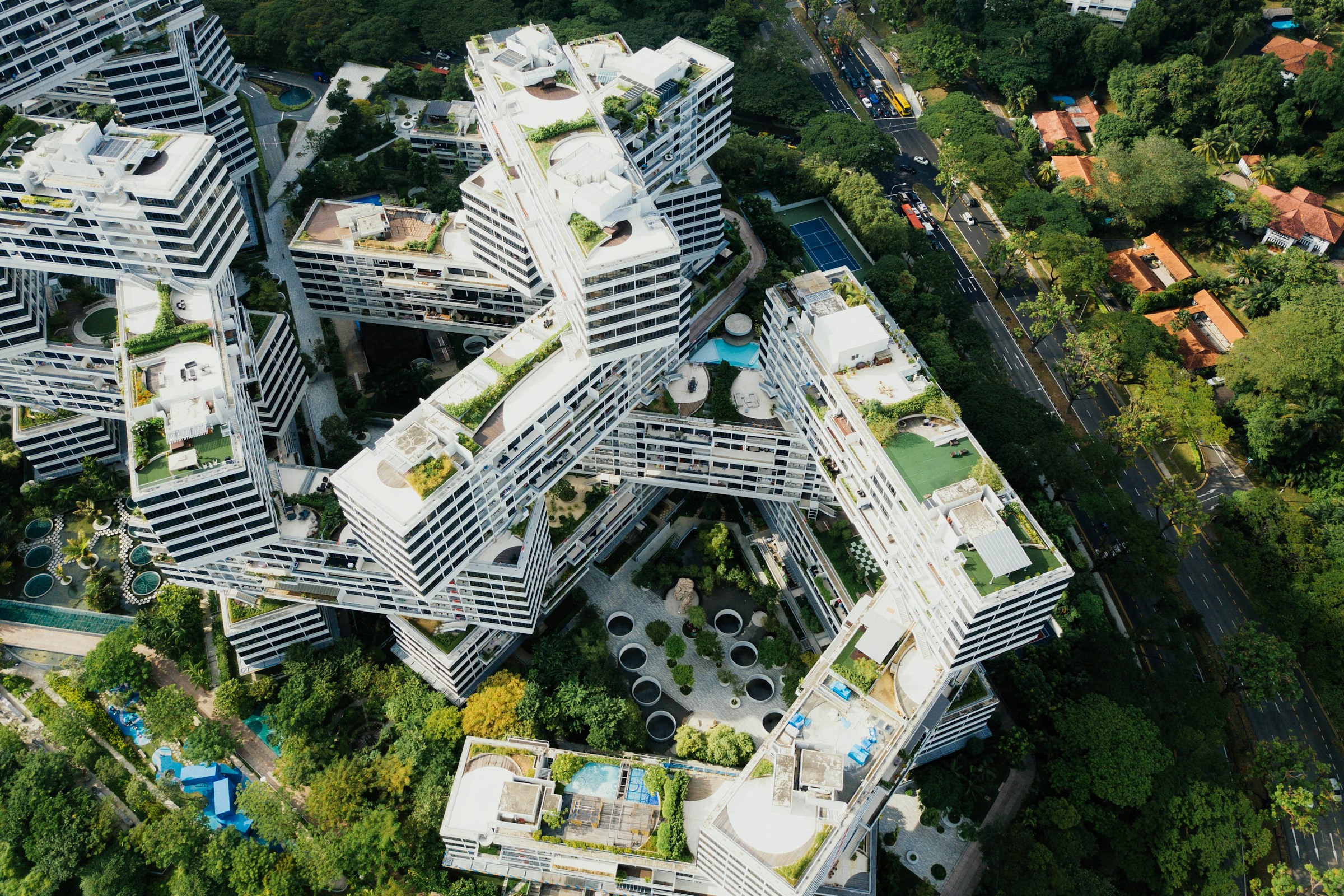Urban Planning - Creating Livable, Sustainable Cities
Urban planning takes into consideration various factors such as land use, transportation, housing, public spaces, and environmental sustainability to ensure that cities meet the needs of their residents and promote the well-being of communities.
Author:George EvansMar 21, 2025366 Shares366.1K Views

Urban planningis the process of designing and managing the physical, social, and economic aspects of urban areas.
It involves the development and implementation of plans and policies that aim to create sustainable, functional, and aesthetically pleasing cities and communities.
Urban planning takes into consideration various factors such as land use, transportation, housing, public spaces, and environmental sustainability to ensure that cities meet the needs of their residents and promote the well-being of communities.

What is Urban Planning?
Elements Of Urban Planning
Urban planning is the process of designing and managing the physical, social, and economic aspects of cities, towns, and other urban areas.
It involves a wide range of elements that contribute to creating a sustainable, livable, and vibrant community. Here are some of the key elements of urban planning:
Land Use Planning
The process of determining how to use land for various purposes, such as residential, commercial, industrial, or recreational.
Transportation Planning
The process of designing and managing transportation systems, including roads, highways, public transit, and pedestrian and bicycle networks.
Environmental Planning
The process of managing and protecting natural resources and reducing the impact of development on the environment.
Housing Planning
The process of ensuring that there is an adequate supply of affordable and accessible housing for all members of the community.
Economic Development Planning
The process of promoting economic growth and development through the attraction of new businesses and industries, the retention and expansion of existing businesses, and the development of workforce training and education programs.
Community Engagement
The process of involving the community in the planning process and ensuring that their input and feedback are incorporated into the final plan.
Urban Design
The process of designing the physical form and layout of urban areas, including buildings, streets, parks, and public spaces, to create a visually attractive and functional environment.
Zoning
The process of regulating land use and development through the establishment of zoning districts and the imposition of development standards and regulations.
Historic Preservation
The process of preserving and protecting historic buildings and sites to maintain a connection to the community's past and cultural heritage.
Disaster Mitigation And Emergency Planning
The process of preparing for and responding to natural disasters and emergencies, including the development of evacuation plans and the provision of emergency services.
These elements are all essential components of urban planning, and they work together to create a sustainable, livable, and resilient community.
Urban Planning Process
Urban planning is a process that involves the development and design of land use and the built environment of urban areas.
The process includes various stages that are important for the effective and efficient planning of urban areas. Here are some of the stages of the urban planning process:
- Analysis:The first step in the urban planning process is to conduct an analysis of the area to be planned. This analysis includes a study of the existing land use, infrastructure, and other important factors that affect the planning process.
- Visioning:Once the analysis is complete, the next step is to develop a vision for the area. This involves setting goals and objectives for the area and determining the desired future state of the area.
- Plan Development:The plan development stage involves the creation of a comprehensive plan that outlines the land use, transportation, housing, and other important elements of the urban area.
- Implementation: After the plan is developed, the next step is to implement the plan. This involves zoning, permitting, and other regulatory activities to ensure that the plan is carried out effectively.
- Monitoring and Evaluation: The final stage of the urban planning process is monitoring and evaluation. This involves tracking the progress of the plan and making necessary adjustments to ensure that it remains effective and relevant over time.
Challenges In Urban Planning
Urban planning is a complex and challenging process that involves multiple stakeholders, resources, and competing demands. Some of the key challenges that urban planners face include:
Limited Resources
Urban planners often have to work within limited resources and budgets, which can make it difficult to implement comprehensive plans that address all the needs of a community.
Rapid Urbanization
Rapid population growth in urban areas can lead to overcrowding, pollution, and other negative impacts on quality of life. Urban planners must find ways to accommodate this growth while minimizing its negative effects.
Inadequate Infrastructure
In many cities, infrastructure such as roads, water supply, and sewage systems are inadequate to meet the needs of growing populations. Urban planners must work to improve infrastructure and ensure that it is sustainable over the long term.
Social And Economic Inequality
Urban areas often experience high levels of social and economic inequality, which can lead to social unrest and other negative consequences. Urban planners must work to create inclusive and equitable communities that provide opportunities for all residents.
Environmental Sustainability
Urbanization can have significant negative impacts on the environment, including air and water pollution, habitat destruction, and climate change.
Urban planners must find ways to promote environmental sustainability and minimize the environmental footprint of cities.
Overall, urban planning is a critical process that helps to shape the future of our cities and communities.
Despite the challenges involved, it offers opportunities for creative problem-solving and collaboration among stakeholders to create more livable, sustainable, and equitable urban environments.
Sustainable Urban Planning
Sustainable urban planning refers to the process of designing and developing cities that promote environmental sustainability, social inclusivity, and economic prosperity.
It involves using planning strategies that prioritize the needs of both the present and future generations while minimizing negative impacts on the environment.
Sustainable urban planning aims to create livable and vibrant cities that are resilient to climate change, promote equity, and offer economic opportunities for all.
In this way, it seeks to balance the needs of the environment, the economy, and society. Some of the key principles of sustainable urban planning include:
- Encouraging compact and mixed-use development to reduce reliance on private vehicles and promote sustainable transportation options such as walking, cycling, and public transit.
- Protecting and enhancing natural and cultural resources, including parks, green spaces, heritage buildings, and waterfronts.
- Supporting economic development that is socially inclusive, environmentally sustainable, and economically viable.
- Promoting social equity by ensuring that all communities have access to basic services and infrastructure, including housing, healthcare, education, and public transportation.
- Encouraging community participation and engagement in the planning process to ensure that the needs and aspirations of all residents are considered.
Through sustainable urban planning, cities can become more resilient, equitable, and environmentally sustainable, offering a high quality of life for all their residents.
People Also Ask
What Are The Principles Of Urban Planning?
Urban planning principles include sustainability, accessibility, livability, resilience, and equity. These principles help create healthy and inclusive communities that promote economic, social, and environmental well-being.
What Are The Benefits Of Urban Planning?
Urban planning can provide a range of benefits such as improved public health, increased economic opportunities, enhanced social cohesion, better environmental outcomes, and more efficient land use.
How Does Urban Planning Impact Transportation?
Urban planning can impact transportation by creating more walkable and bikeable communities, promoting public transit, reducing car dependency, and improving overall mobility and accessibility.
What Is The Role Of Public Participation In Urban Planning?
Public participation plays a vital role in urban planning by involving community members in decision-making processes and ensuring that the planning process is transparent, equitable, and reflective of community needs and values.
What Are The Challenges Facing Urban Planning Today?
Challenges facing urban planning today include rapid urbanization, climate change, social and economic inequality, and increasing demands for affordable housing, transportation, and infrastructure.
Final Words
Urban planning is a crucial aspect of ensuring sustainable and efficient urban development. It involves the careful consideration of a range of factors, including land use, transportation, social and environmental sustainability, and economic development.
Effective urban planning can help create vibrant and livable communities, enhance public health and safety, and promote economic growth.
As cities continue to grow and face new challenges, the role of urban planning will become increasingly important in shaping the future of our urban environments.

George Evans
Author
George Anderson, an exceptional architectural designer, envisions and brings to life structures that transcend the realm of imagination. With an unwavering passion for design and an innate eye for detail, George seamlessly blends form and function, creating immersive spaces that inspire awe.
Driven by a deep appreciation for the interplay of space, light, and materials, George's innovative approach redefines the possibilities of architectural design. His visionary compositions leave an indelible mark, evoking a sense of wonder and transforming the built environment.
George Anderson's transformative designs and unwavering dedication continue to shape the architectural landscape, pushing the boundaries of what is possible and inspiring generations to come.
Latest Articles
Popular Articles